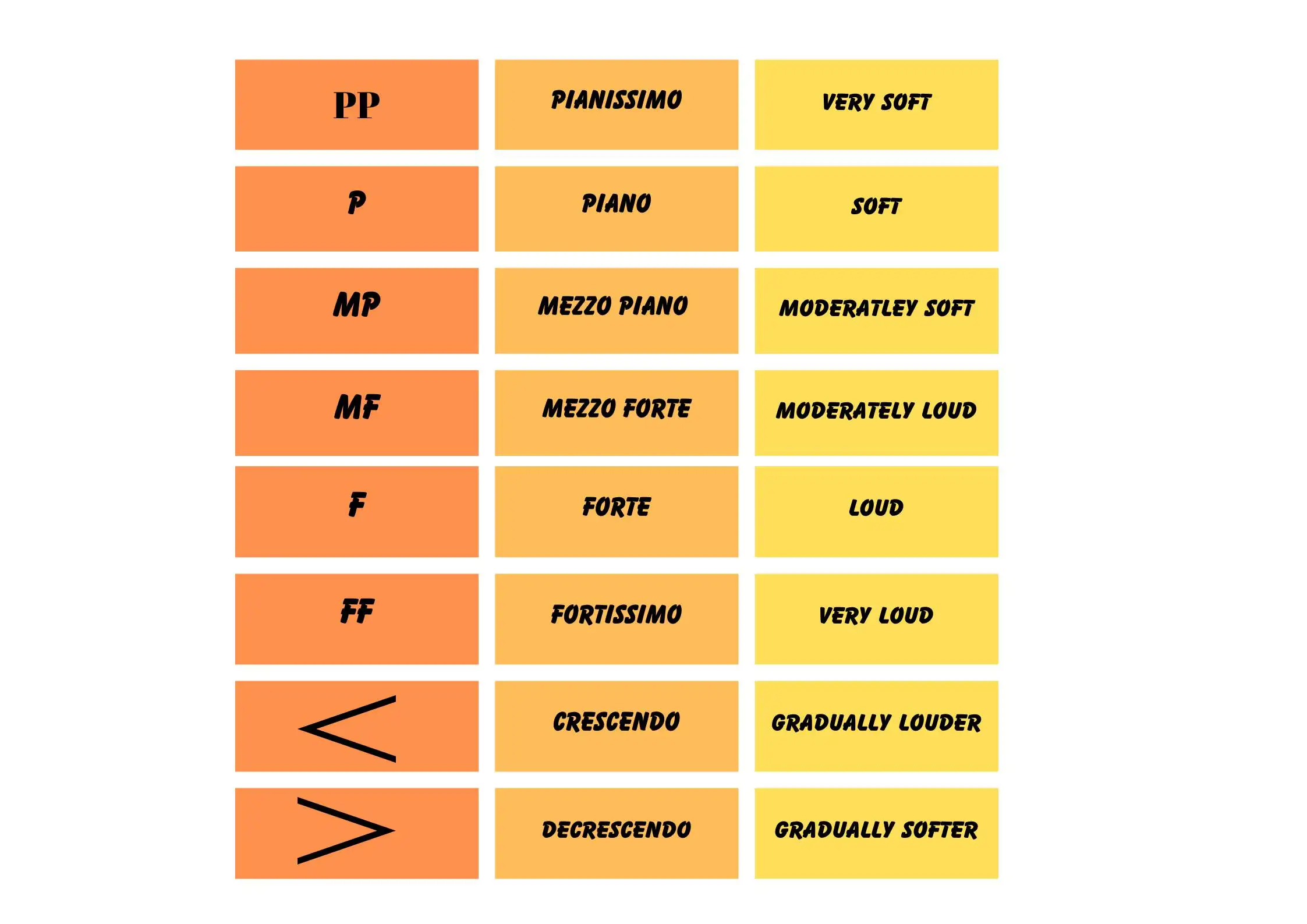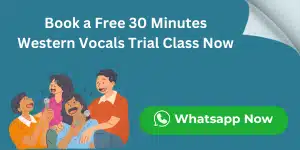- What Is Dynamics In Music?
- What Does Dynamics Mean In Vocals?
- What Is The Importance Of Dynamics In Music?
- How Does Dynamics Works In Music?
- Dynamics In Music: Explained For Beginners
- Dynamics vs Articulation
- What Are The Difference Dynamics In Music?
- How To Use Dynamics In Music?
- How To Improve The Use Of Dynamics In Music?
- Final Remarks!
- FAQs
What Is Dynamics In Music?
Dynamics in Music refers to how loud or soft a musical piece is. Simple, is it not? Here is where it gets a bit tricky. Depending on the context, a performer must interpret dynamic markings or the dynamics.
For example, a particular marking may indicate a different volume between pieces or even within a single piece. Beyond just volume, dynamics are also executed by varying timbre and rubato. But for now, let us remember that the shift in volume between notes or phrases in a composition is known as dynamics.

Did You Know?
Dynamics in music was first introduced by renaissance composer Giovanni Gabrieli.
What Does Dynamics Mean In Vocals?
In simple words, dynamics in vocal means variations in volume, its intensity and the changes in the expressions of the voices. These changes range from delicate (soft) to powerful (forte). Vocalists use dynamics for its dramatic impact on their performances.
What Is The Importance Of Dynamics In Music?
One of the expressive components of music is dynamics. When used skillfully, dynamics lets musicians convey a specific emotional state or feeling as well as maintaining variation and most importantly interest in a musical performance. If this piece of music were to be played or sung in a bland manner, it would sound boring to the listeners. This is why it is very necessary to have variations in the volume of the piece of the music.
How Does Dynamics Works In Music?
When a larger variety of instruments were developed, more kinds of dynamic markings came to light. As a result, composers started using more and more words different types of dynamics in music to used express the relative volumes at which they wanted their pieces to be performed.
Dynamics In Music: Explained For Beginners
If you are a beginner Just remember that, dynamics means is a musical piece’s loudness or softness. However, we describe the piece’s volume using various Italian terms and symbols rather than English terms like loud and soft. We divide types of dynamics involved in music theory into two categories.
- Static Dynamics
- Changing Dynamics
Static Dynamics
The musical instructions known as static dynamics instruct us to play the music at a constant volume. Put another way, play every note at the same volume as the previous one rather than getting louder or quieter.
Changing Dynamics
Changing dynamics are used to show gradual changes in volume in a piece of music. The crescendo and decrescendo types of dynamics indicate the changes in dynamics.
A composer only needs to include a dynamic name (mezzo piano) or abbreviation (mp) in the score to alter the piece’s dynamics at any point. Occasionally, though, the composer will also want to specify the performer’s progression to that dynamic. An interesting piece of music is one where the volume is not always constant.
The terms crescendo, decrescendo, and diminuendo are most frequently used to describe “changed dynamics” or “change in dynamics.”
- crescendo (abbreviated cresc.) meaning “increasing” (literally “growing”)
- decrescendo (abbreviated to decresc.) translates to “decreasing”.
- diminuendo (abbreviated dim.) refers to “diminishing”.
Crescendo
A crescendo means gradually getting louder. It is a gradual increase in a piece of music’s dynamic level over a set amount of time. Put more simply, it’s the sound of music intensifying.
A crescendo, for instance, would occur when a section transitions from a pianissimo to a fortissimo dynamic.
Decrescendo
A decrescendo refers to gradually getting softer. It would be the gradual decrease of the dynamic level in a piece of music. Decrescendo and diminuendo are basically the same.
A decrescendo would appear when a section is written to flow from forte to Piano, for example.
I am adding an interesting yet very simple exercise to understand crescendo and decrescendo and diminuendo. It is a one note hum starting with piano(softly)- a Crescendo(<)- Forte(f)- a Diminuendo(>) and finishing with a Piano(p)

Dynamics vs Articulation
Dynamics in music refer to how loud or soft a note is, such as faint (pianissimo), middle (mezzo-forte), or booming (fortissimo). Often, sheet music notes specific symbols or words about certain dynamics. Articulation is the way one plays the note harshly (staccato), smoothly (legato), or with emphasis (marcato).
Dynamics and articulations work together to build up the emotional story of a song. For example, a crescendo, which is an increase in volume, when combined with legato produces a rising, flowing emotional effect. Staccato played fortissimo gives a powerful, snappy impression. These interactions make dynamics and articulation very important tools for any performer who wishes to express the intended feeling of a composition.
What Are The Difference Dynamics In Music?

Pianissimo (pp)
Pronounced as “pi-ah-ni-si-mo”. In music, the term “pianissimo” denotes very softly or quietly. The musician is typically advised to perform this portion of the music very softly when they see the letter pp.
Piano ( p)
This is pronounced as “pi-ah-no.” The term “piano” in music refers to quietly or softly. When reading music, the letter p usually indicates to the musician that this section of the composition should be performed quietly.
Mezzo Piano (mp)
Pronounced as “Met-so-pi-ah-no”. The term “mezzo piano” in music refers to moderately soft. The letter mp usually indicates to the musician that this section of the composition should be performed moderately soft.
Mezzo Forte (mf)
Pronounced as “Met-so-for-te”. The term “mezzo piano” in music refers to moderately loud. The letter mf usually indicates that the section of the music is performed moderately loud.
Forte (f)
Forte means Loud. when a piece of music is marked forte it would mean that the performer is required to sing or play loudly.
Fun Fact
In the 1800s, Piano was called as Piano Forte in Western Music Art.
Fortissimo (ff)
This term (pronounced “for-TISS-im-oh”) describes a gradual change in volume, either from loud to soft or from soft to loud. The Italian words “forte” means “loud” and “issimo” means “very.” The two words can be combined to form fortissimo, which means “very loud.” This phrase is used to indicate a loud section of music or singing.
Pianississimo (ppp) and Fortississimo (fff)
We still have double “issimo” combinations with piano or forte, called Pianississimo (pronounced “PEE-an-iss-SISS-im-oh”) and Fortisssimo (pronounced “FOR-tiss-SISS-im-oh”). But one of the “issimo” is abbreviated as “iss.”So, “very very quiet” is denoted by pianississimo and “very very loud” by fortississimo. For pianississimo, the symbol is “ppp,” and for fortississimo, it is “fff.” Although they are not frequently used, these dynamics (ppp and fff) can be found in orchestral works.
How To Use Dynamics In Music?
If I define dynamics in music, it refer to the changes in the loudness or the intensity in a piece. Musicians use dynamics to guide the performances. Let me give you an example of ‘how to use dynamics in music’ using Beethovan’ “Fur Elise.”
Start the piece SOFTLY (Piano) and gently to create a wistful feeling. Gradually increase the volume (Crescendo) to emphasize an emotional shift. As you reach the 3rd section, use a Forte to suddenly play LOUD, to highlight the change in the intensity. While reaching the end, return to playing that session SOFT (Piano) to leave the audience with a sense of calmness.
How To Improve The Use Of Dynamics In Music?
Here are few tips to improve the use of Dynamics,
- Try practicing in different varieties of volumes.
- Try playing or singing extremely soft or loud and experiment with the volumes with those ranges.
- If you are an instrumentalist, try experimenting with light and heavy touches on your instrument.
- If you are a singer, try articulating notes in different ways to express with different dynamic markings.
- Use a metronome to practice the changing dynamics, crescendos and decrescendos.
Final Remarks!
As a musician I can assure you that dynamics bring out a very interesting element of any music composition. Without dynamics there’s a good chance it sounds like a good song but with no lyrics. Listeners would not be able to enjoy music without dynamics.
FAQs
What are dynamics?
Dynamics in music are the range of volume that music notes can be played.
What are the dynamic symbols in music?
pp,mp,p,f,mf,ff are the dynamics symbols used in music.
Why are dynamics important in music?
Dynamics add interest, emotion, and drama to music.
What are the different levels of dynamics?
Forte, Fortissimo, Mezzo-forte, Piano. Pianissimo, Mezzo-forte, Crescendo and Decrescendo.
How do dynamics affect the sound of music?
Not at all, Dynamics in music do not affect its sounds rather creates an interesting element and improves the sound of music.
How to understand dynamics markings in music?
Generally, dynamics in music is understood by looking at the symbols mentioned on a music sheet. Forte-f, Fortissimo-ff, Mezzo forte-mf, Piano-p. Pianissimo-pp, Mezzo-forte-mp, crescendo and decrescendo.
Is there anything called the 7 dynamics of music?
No, there is no such thing as 7 dynamics of music in Music or Music theory.
Related Blog: What Is Solfege In Singing?































